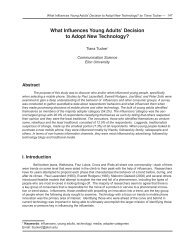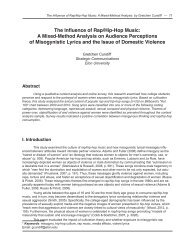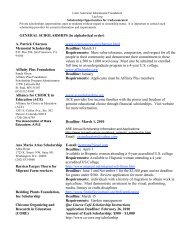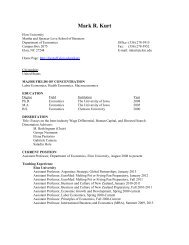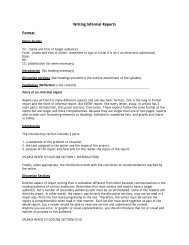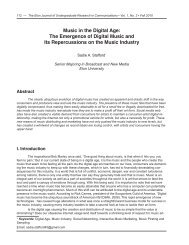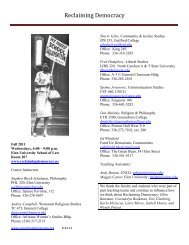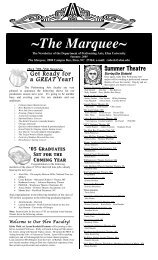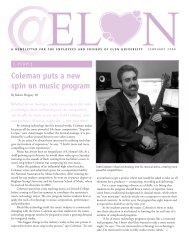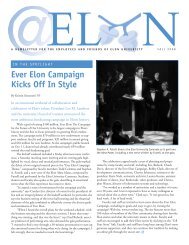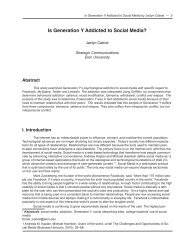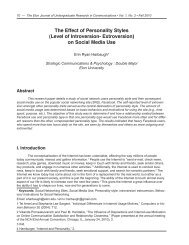In the Supreme Court of the United States In the Supreme Court of ...
In the Supreme Court of the United States In the Supreme Court of ...
In the Supreme Court of the United States In the Supreme Court of ...
Create successful ePaper yourself
Turn your PDF publications into a flip-book with our unique Google optimized e-Paper software.
Amendment intrusion was outweighed by <strong>the</strong> paramount interest in safety. Id. at 334. Buie<br />
emphasized <strong>the</strong> arrest, but only, as <strong>the</strong> Fifth Circuit explained, “because <strong>the</strong> arrest exposed <strong>the</strong><br />
<strong>of</strong>ficers to danger.” <strong>United</strong> <strong>States</strong> v. Gould, 364 F.3d 578, 581 (5th Cir. 2004), abrogated on<br />
o<strong>the</strong>r grounds by Kentucky v. King, 131 S. Ct. 1849 (2011).<br />
Terry, Long, and Buie all suggest that a protective search is reasonable when an <strong>of</strong>ficer<br />
can point to “specific and articulable facts which . . . reasonably warrant” a conclusion that <strong>the</strong><br />
<strong>of</strong>ficer or o<strong>the</strong>rs are in danger. Buie, 494 U.S. at 327; Long, 463 U.S. at 1049; Terry, 392 U.S. at<br />
21. <strong>In</strong> all three cases, this <strong>Court</strong> performed <strong>the</strong> Fourth Amendment balancing test and held that<br />
<strong>the</strong> safety interest outweighed <strong>the</strong> Fourth Amendment intrusion. See Buie, 494 U.S. at 332–33<br />
(“[O]fficers were entitled to . . . search” because “[t]he ingredients to apply <strong>the</strong> balance struck in<br />
Terry and Long are present in this case.”). The majority <strong>of</strong> circuits correctly apply <strong>the</strong> same<br />
reasoning and hold that safety outweighs <strong>the</strong> Fourth Amendment intrusion in non-arrest<br />
protective sweeps. See, e.g., <strong>United</strong> <strong>States</strong> v. Hernandez, 941 F.2d 133, 135–36 (2d Cir. 1991)<br />
(noting this <strong>Court</strong> applied <strong>the</strong> same balancing test in Terry, Long, and Buie).<br />
2. This <strong>Court</strong> should uphold <strong>the</strong> majority circuits’ broad construction <strong>of</strong> Terry,<br />
Long, and Buie by upholding protective searches when <strong>of</strong>ficers reasonably<br />
suspect danger.<br />
The First, Second, Fifth, Sixth, Seventh, and D.C. Circuits have all upheld <strong>the</strong><br />
reasonableness <strong>of</strong> non-arrest protective sweeps, along with one panel <strong>of</strong> <strong>the</strong> Ninth Circuit. See,<br />
e.g., Leaf v. Shulnutt, 400 F.3d 1070, 1086–88 (7th Cir. 2005); <strong>United</strong> <strong>States</strong> v. Martins, 413<br />
F.3d 139, 150 (1st Cir. 2005); Gould, 364 F.3d at 581; <strong>United</strong> <strong>States</strong> v. Miller, 430 F.3d 93, 95<br />
(2d Cir. 2005); <strong>United</strong> <strong>States</strong> v. Taylor, 248 F.3d 506, 513–14 (6th Cir. 2001); <strong>United</strong> <strong>States</strong> v.<br />
Garcia, 997 F.2d 1273, 1282 (9th Cir. 1993); <strong>United</strong> <strong>States</strong> v. Patrick, 959 F.2d 991, 996–97<br />
(D.C. Cir. 1992); contra <strong>United</strong> <strong>States</strong> v. Reid, 226 F.3d 1020, 1027 (9th Cir. 2000).<br />
10




